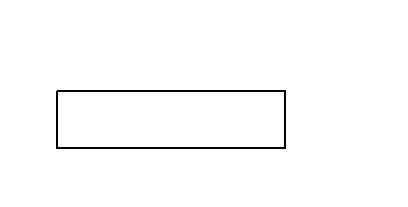Question 1207440: a. Draw 4 different rectangles, all of which have an area of 4 square inches. Label your rectangles with their lengths and widths.(Think about decimals and fractions)
b. Determine the permiters of each of your rectangles in part (a). Then label your rectangles A,B,C,and D in increasing order of their perimeters, so that A has the smallest perimeter and D has the largest permiter among your rectangles.
c. Qualitatively, how do the smallesr-perimeter rectangles that you drew in part (a)look different from the larger-perimeter rectangles? Describe how the shapes of the rectangles change as you go from the rectangle of the smallest perimeter to the rectangle of the largest perimeter.
Answer by Edwin McCravy(20054)   (Show Source): (Show Source):
You can put this solution on YOUR website!
Rectangle A has length 2.5, width 4/2.5 = 1.6, perimeter 2(2.5)+2(1.6)=8.2
 Rectangle B has length 3.2, width 4/3.2 = 1.25, perimeter 2(3.2)+2(1.25)=8.9
Rectangle B has length 3.2, width 4/3.2 = 1.25, perimeter 2(3.2)+2(1.25)=8.9
 Rectangle C has length 4, width 4/4 = 1, perimeter 2(4)+2(1)=10
Rectangle C has length 4, width 4/4 = 1, perimeter 2(4)+2(1)=10
 Rectangle D has length 5, width 4/5 = 0.8, perimeter 2(5)+2(0.8)=11.6
Rectangle D has length 5, width 4/5 = 0.8, perimeter 2(5)+2(0.8)=11.6
 So for given area 4, we might conjecture that rectangles with smaller perimeters
have their lengths closer to their widths. And therefore, rectangles with
larger perimeters have their lengths much greater than their widths.
The nearer the rectangles are to a square, the smaller their perimeter.
So we might make a more general conjecture that of all rectangles that have a
given area, the one with the smallest perimeter possible is the one when the
rectangle is a square.
Edwin
So for given area 4, we might conjecture that rectangles with smaller perimeters
have their lengths closer to their widths. And therefore, rectangles with
larger perimeters have their lengths much greater than their widths.
The nearer the rectangles are to a square, the smaller their perimeter.
So we might make a more general conjecture that of all rectangles that have a
given area, the one with the smallest perimeter possible is the one when the
rectangle is a square.
Edwin
|
|
|